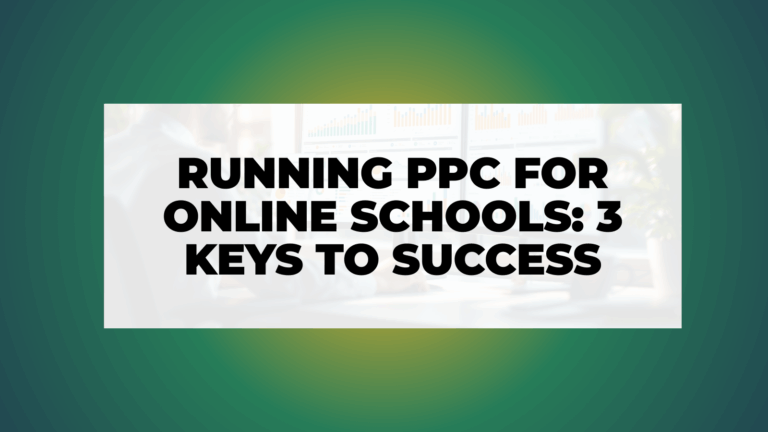If you run an online school or education business, you’ve likely felt it: marketing often feels chaotic. One week leads are flowing. The next week? Crickets. And no one on your team can explain why.
This kind of instability kills momentum. Worse, it chips away at your confidence in your own marketing team and product. But here’s the truth most CEOs never hear:
The problem isn’t the people or the product. It’s the system.
Most online schools don’t fail at marketing because of bad ideas. They fail because their system doesn’t allow for consistent execution, clear feedback loops, or measurable performance.
That’s where the 3-Pillar System comes in. At nn.partners, we’ve helped education businesses spending millions on ads turn their marketing into a predictable growth engine using this framework.
Let’s break it down.
Pillar 1: Conversion Tracking – Know What’s Working, Instantly
Without proper conversion tracking, you’re flying blind. Clicks, impressions, and views might make you feel productive, but they don’t help you scale.
Real growth comes from tracking student acquisition milestones like:
- Syllabus downloads
- Booked consultations
- Trial sign-ups
- Paid enrollments
Each of these is a signal that your marketing is working — or not. If you don’t know how many qualified leads came from each campaign, you’re just hoping the money you spent turns into students. Hope is not a strategy.
For a full breakdown of how to track these steps, see our GA4 Conversion Tracking Guide.
Pillar 2: Campaign Structure – Build a System That Scale
If your ad account looks like a graveyard of half-finished tests, you’re not alone. Most schools mix cold and warm audiences, cram multiple programs into one campaign, or test new ideas without isolating variables.
A clean structure separates:
- Prospecting vs. remarketing
- Each course or program
- Search themes by intent
This makes your budget easier to control, results easier to interpret, and winning campaigns easier to scale.
We recommend starting with single-theme ad groups for Google Ads and using program-specific landing pages. Our article on Structuring Google Ads for Education covers this in more depth.
Pillar 3: Communication Strategy – Say What Your Students Need to Hear
Even with perfect tracking and structure, your marketing fails if the message doesn’t land.
Too many campaigns promise transformation, then lead to generic landing pages. It’s a trust killer.
Every campaign should match the student’s intent:
- Are they switching careers? Highlight graduate outcomes.
- Are they upskilling? Show course value and completion time.
- Are they comparing options? Use testimonials and guarantees.
The key is message alignment: make sure what the ad promises is exactly what the landing page delivers. Read our guide on How to Fix Ad ROI if your ads are generating clicks but no conversions.
From Gut Feeling to Growth Engine
Most school owners think marketing is inherently unpredictable. It’s not. You just need the right system.
With proper tracking, structure, and messaging, your online school can:
- Lower student acquisition costs
- Scale enrollments predictably
- Make confident budget decisions
If your team is stuck in reactive mode, spinning up new campaigns every month without clarity, this 3-pillar framework is how you bring back control.
Tired of guessing? Let’s build your growth engine together contact us to schedule a discovery call.



